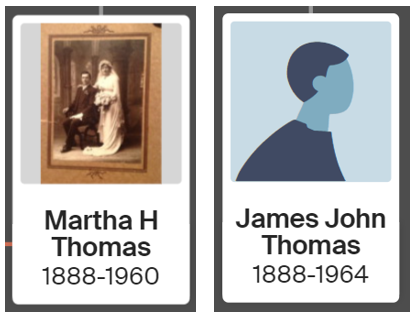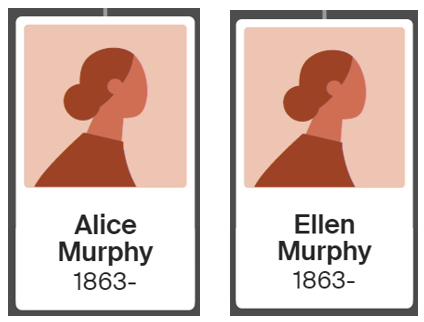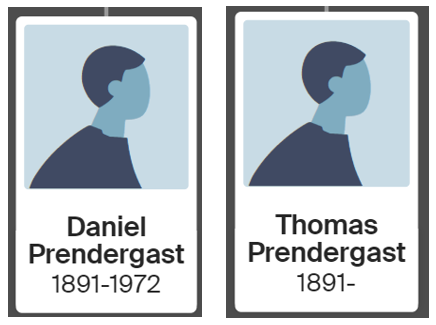In Remembrance
(For my 'Family Anniversaries' page)
 |
| John (known as Jack) Browning |
- John was born on the 4th of November 1885, on the family farm Rosehill, near Blakebrook, in the Northern Rivers region of New South Wales.
- His first name was recorded as John on his birth certificate. He was however more commonly known as Jack for most of his life.
- The names John and Jack were used interchangeably on various records throughout his lifetime, which made research quite difficult. During this post I will combine the names and refer to him as John (Jack).
- According to the information recorded on John's (Jack's) birth certificate, he came into the world as the 11th child born to Joseph Edward Browning and Elizabeth (Eliza) Browning nee Wilson.
- There had apparently been seven children living when John (Jack) was born and three that had passed away. I have only found records pertaining to nine children born before John (Jack) came into the world.
- Those nine siblings and the two who were born after John (Jack) were:
- Growing up on the family farm near Blakebrook amidst his siblings, John (Jack) not only learned the intricacies of farm life, but also the trade of a teamster, following in the footsteps of his father who plied that trade well into his 60s.
- As a young adult, John (Jack) and his brothers Henry, Samuel, and William left the family farm and took charge of the family teamster business; work that was vital to the timber industry in the region.
- Teamsters had a team of either horses or bullocks and carried items/goods from one place to another for a living. At that time, the timber industry was flourishing and was, by far, the most important industry in the district. John (Jack) and his brothers, like many teamsters in the area, obtained felled and sawn timber from the timber cutters, and hauled it to the sawmill in nearby Lismore.
- The 1913 Electoral Record shows that John (Jack), aged 28, was living in Nimbin, north of Lismore, in the Northern Rivers region of New South Wales and his occupation was listed as 'teamster'.
- The following year bought news from overseas that was about to change the course of John's (Jack's) life significantly. Mid-1914 saw the beginning of the global conflict known as The Great War.
- The outbreak of World War 1 prompted John (Jack) to answer the call of duty. He enlisted on the 16th of November, 1915.
- John (Jack) enlisted under the name of Jack, not John, at the age of 30 (although his attestation papers listed him as 26 years old).
- After enlistment, John (Jack) was sent to training camp at Enoggera in Queensland where training lasted for several months.
- When friends discovered that John (Jack) would be given leave to spend the 1916 New Year with his parents, they organised an enormous farewell celebration. A rather detailed account of this farewell was published in a Lismore newspaper after the event (and both names - John and Jack - were used in this account!).
- The article mentions that "in three days sufficient donations were received to enable (the) ... purchase (of) ... a handsome wristlet watch. Invitations were issued, and fully sixty people availed themselves of the opportunity of attending this pleasant function, which was held in the spacious dining room, kindly lent by Mr. and Mrs. Jos. (Joseph) Browning, Sen. for the occasion." So. the dining room of John's parents' home was decorated and turned into a function room for around sixty people. It must have been a rather spacious room!
- The article goes on to state "The chairman spoke of the great respect and esteem in which the guest was held, and then called on Miss May Browning to fasten the watch on Jack's wrist." I think the degree to which John was respected in the community was made clear in the last part of the article. After the dancing and merriment ended around midnight, the chairman "called on all present to assemble together as he still had another pleasant duty to perform. The residents of Blakebrook and districts had subscribed a very nice autograph album to be present by Private Browning to his parents as a keepsake. Mr. Maher called on all present to sign their names in the book, and in a neat speech asked Jack to hand this book to his aged parents as a memento of the pleasant evening he had spent with parents and friends."
- During his training period, John (Jack) appears to have moved through various battalions, according to his active service record.
- Soon after enlistment John (Jack) joined the 34th Battalion "D" Company.
- On February 2nd 1916 he moved to the 36th Battalion "A" Company.
- John (Jack) then moved to the 42nd Battalion "A" Company on the 16th of February 1916.
- He was taken on strength by the 42nd Battalion "A" Company of the 15th of April 1916.
- After the completion of training at Thompson's Paddock Camp, at Enoggera Barracks in Queensland, John's (Jack's) unit embarked from Sydney, New South Wales, on board HMAT A30 Borda on the 5th of June 1916.
- John (Jack) disembarked at Southampton, England on the 23rd of July 1916. There was a further training period in England at the Lark Hill training camp, on the Salisbury Plain, before he proceeded overseas to France on the 25th of November 1916. By this time, John was 31 years old.
- In the trenches of France, John (Jack) became a member of a Lewis Gun Team, a crucial role in the evolving tactics of semi-open warfare.
 |
| A Lewis Gun Team on a duckboard trail 1917 Source: Australian War Memorial Copyright expired - Public Domain |
"Important tactical and organisational developments occurred over the winter (1916-1917). One major tactical and organisational change was the organisation of the infantry. ... the original allocation of Lewis guns of four per battalion was gradually increased to twelve at the of July 1916. ... In December, enough Lewis guns became available to give each infantry battalion sixteen guns and BEF GHQ decided to allocate one to each platoon while still allowing for them to be pooled at company level if need be.
A Lewis gun section (of a platoon) consisted of nine fully trained Lewis gunners, although there was only one Lewis gun. The section leader was a sergeant or corporal. He allotted fields of fire, arranged reliefs, and recorded ammunition expenditure and breakages. Each squad had a gunner, the man who carried the gun into action and fired it. ... An assistant stuck close to the gunner, ready to replace the gunner if he was hit and helping the gunner in any way possible with loading and breakages. ... In action, the assistant lay beside the gunner ... From this position, he could also provide the gunner with moral support and take over more quickly if the gunner became a casualty.
The rest of the team were riflemen doubling as ammunition carriers, scouts and observers. Each rifleman carried 50 rounds of rifle ammunition. One rifleman carried four to eight Lewis gun magazines and maintained close touch with the gunner and assistant, ready to replace the assistant if either the assistant or gunner became a casualty. Two were lightly loaded scouts, moving ahead of the gun, locating targets and observing for the gun when necessary while the second scout could be used as a messenger when the gun was in position. The remaining three were ammunition carriers with six magazines each."
- Each Lewis Gun Team accounted for 1 Lewis gun and 2068 rounds of ammunition.
- John (Jack) was the No. 1 in his team, a position that required skill, courage and precision.
- Despite being wounded in action on the 2nd of February 1917, he remained on duty. I have not yet found any details about the type of wound he suffered, and the family, who received this news via telegram on the 20th of February, were none the wiser either.
- Whilst John (Jack) had seemingly been fortunate in February, his fate took a tragic turn the following month. On the 8th of March 1917, John was killed in action near Armentieres, France.
- The Browning family, who had bid a heartfelt farewell to John just a few months earlier, received the devastating news of his sacrifice.
- A notice appeared in the local Lismore newspaper a couple of weeks later. It mentioned Mrs. Roy Hancock, John's sister Sarah Ann, and Mr. and Mrs. Joseph Browning, John's parents. Interestingly, the paragraph relating to Sarah Ann has John's name recorded as 'Jock', but then the following paragraph relating to John's parents has his name recorded as 'John'. Perhaps he was also affectionately known to some as Jock!!
- A little gem that appeared in the same local newspaper a few months later was the publication of a letter received from Private Harley on the front line in France. In this letter, Harley mentions the death of John (Jack):
"The river boys (meaning the Richmond River near Lismore) have been pretty lucky in our battalion so far, only one that I know of being killed, and that was Jack Browning, from Lismore, one of the biggest and best."
Just another reminder of the esteem in which John was held by those who knew him.
- The letter of sympathy written by Major A. R. Heron, on behalf of the Commandant of the 42nd Battalion, and sent to John's (Jack's) parents was published in the Lismore newspaper in May of 1917. That letter presented information about the nature of John's (Jack's) death, which I did not find included in his war service record.
John was "killed instantly by a shell which hit him in the chest during a bombardment."
The words "He was a valuable man and was employed on a special branch of the service, which demanded coolness and courage in the face of great danger, a duty which he always performed very satisfactorily" speaks to the good character of this man.
- John (Jack) was buried at the Cite Bonjean Military Cemetery in Armentieres, France.
- His headstone can be found in Plot IV, Row F, Grave No. 7.
- John's (Jack's) name is also commemorated on the Wall of Honour at the Australian War Memorial in Canberra.
- John's (Jack's) name is commemorated in a couple of other places as well ....
- It appears on the front panel of the Nimbin District War Memorial in Nimbin, New South Wales.
 |
| Opening of the Nimbin District War Memorial on the 24th of May 1921 Photo sourced from the Virtual War Memorial website (https://vwma.org.au/explore/memorials/8305) |
- This memorial in Nimbin was unveiled in 1921, and I have no doubt some of his family were there that day and likely in the photo that was taken.
- John's (Jack's) name also appears on the Great War Wall of Honour at St. Mark's Anglican Church in Nimbin, in the Lismore Municipality. You can see it top left in the photo above.
- John (Jack) was survived by both his parents(although his father passed away just eight months later, in November 1917) and all nine siblings who had survived into adulthood.
- John (Jack) was obviously remembered with love and missed dearly as his family were placing notices in local newspapers on the anniversary of his death for a number of years.
- One of John's (Jack's) siblings also enlisted and served in WW1. His youngest brother, Robert Albert Browning, enlisted just a month after the death of John (Jack), in April of 1917. He headed overseas in August that year, but by April of 1918, Robert was reported as suffering with neurasthenia and identified for an early return home. Whilst the war did not claim the life of this sibling, it left its mark on his emotional health, as was often the case.
































.jpg)



















